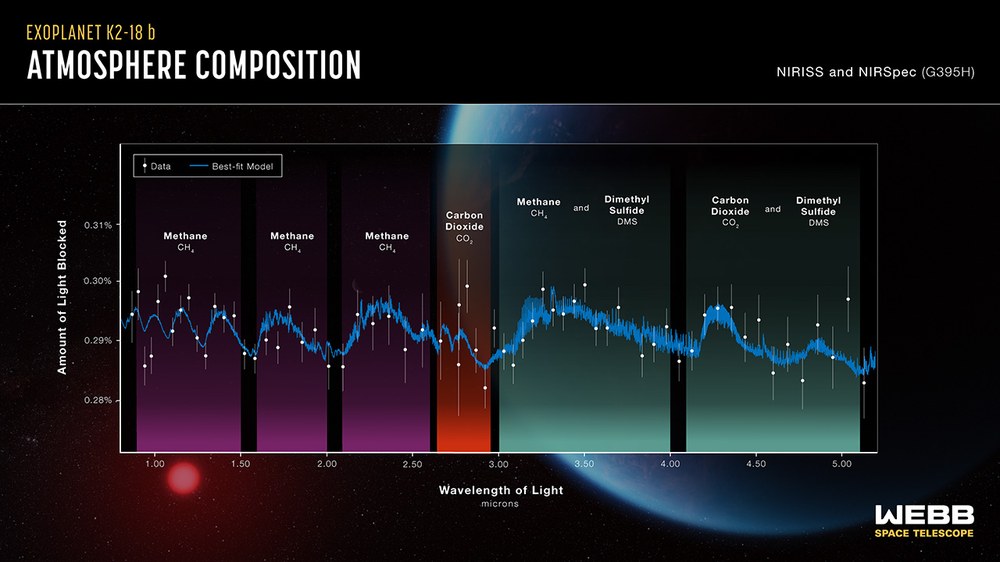Dimethyl sulphide: a sign of life on the exoplanet K2-18b?
Dimethyl sulphide, CH3-S-CH3 or DMS for short, probably doesn't mean much to most people, but most people have smelled it before. It is the typical odour that you notice on or near the sea. It is produced by the microscopically small algae, the phytoplankton, that swim around in the uppermost layer of the sea. So far, only biological sources of DMS have been found, which makes it very interesting for the search for life on other celestial bodies.
The importance of DMS as a biomarker was already pointed out more than 10 years ago in a specialist article (Seager et al, ApJ, 775,104, 2013). In contrast to CH4, H2S and N2O, which can have biotic and abiotic origins, DMS together with CH3Cl is, according to current knowledge, produced exclusively by microbes, i.e. by life. This makes DMS a good biomarker and its detection in the atmosphere of an exoplanet would be a sensation.
The substance DMS has now once again become the focus of scientific attention. In September 2023, the results of an observation of K2-18 in the wavelength range between 1 and 5 µm with the James Webb telescope were presented. The measurement of the transit depth at these wavelengths shows the existence of various molecules, e.g. methane and carbon dioxide. It is being discussed whether lines of DMS can also be found in this spectrum.
Find more details in the publication by Madhusudhan et al, 2023, ApJL


